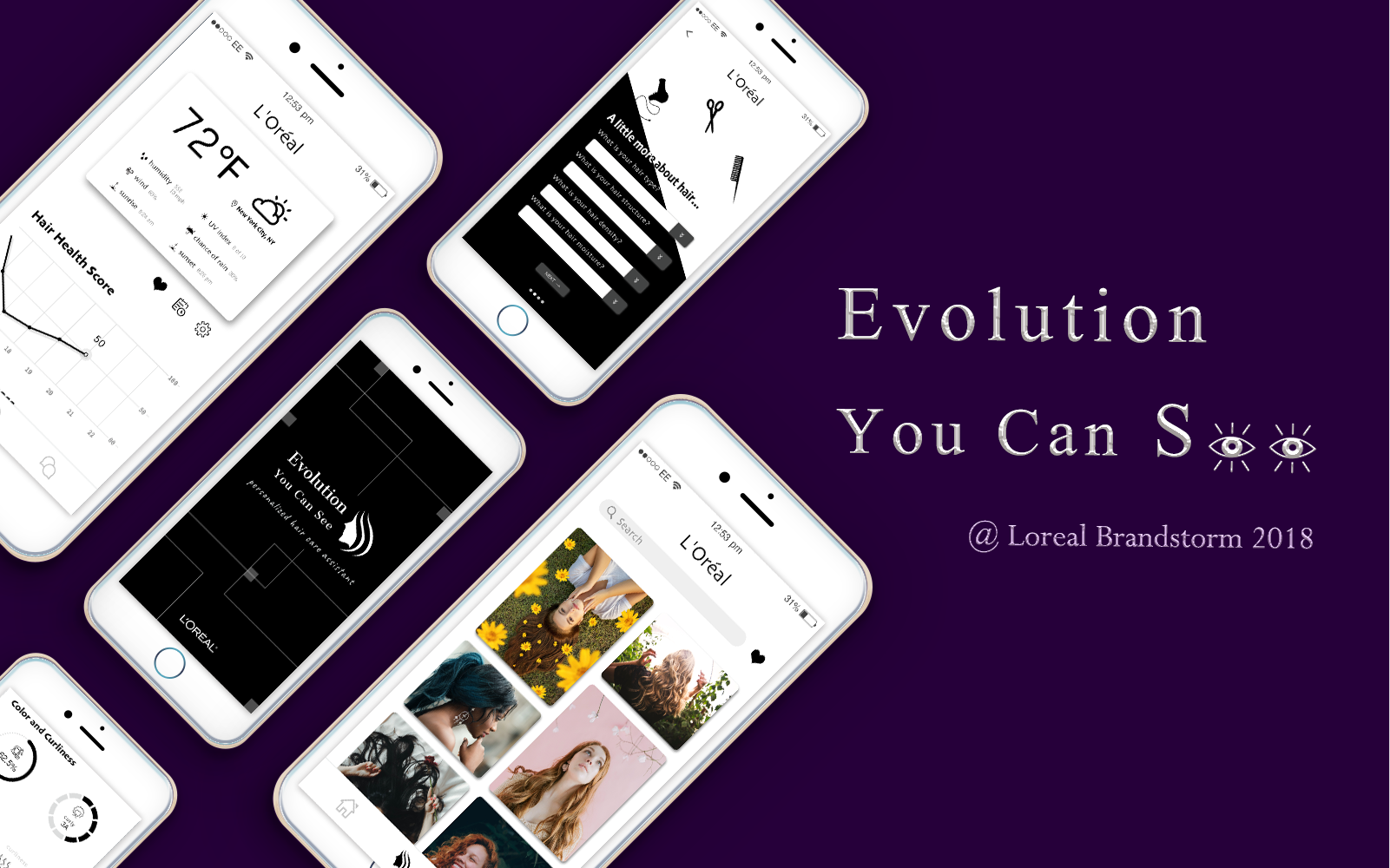

Figma | first phase: Nov, 2017 - Mar, 2018 | second phase: Mar, 2018 - May, 2018
Have you ever had the experience that you wished you’d never come to this hair salon? Have you had the feeling that this new hair look ruined your life? Have you been annoyed because the color you just dyed has gone away so quickly? Have you yelled at the moment you left the salon? I have the experience myself several times, and this project (Loreal Brandstorm 2018) gives me a chance to make deep exploration. The goal for the project is to improve customers’ salon experience in order to build a long-term relationship with the customers and to further increase the brand loyalty. We have come up with an one-stop system to simulate the hairdressing outcome and later store the information in an assisting app.
Tzu-Ying Wu
Kaila Lee
Kai-Chin Shih
Figma, Prototyping, UX Research, User Testing
The mission for Brandstorm 2018 is to invent the customer experience for the professional salon of the future. The experience should help recruit and engage Millennials, as well as to increase the hairdresser’s loyalty. Loreal wants to see innovative digital solutions, connected technologies and sustainable initiatives.
In 2017, there were 78.17 million people in the US got a haircut 2 to 3 times, and 60.15 million more than 4 times. The statistics also predicts that the hair salon industry will keep growing in 5 years, for both men and women. It is a booming industry that is worth researched yet still needs to be improved. To build a strong customer loyalty, customer satisfaction of service quality is the most important. Based on both online research and the first data we collected from 46 surveys and 7 interviews (aged 19 to 47), we have found 3 main pain points which keep the customers from being satisfied or even result in a very unpleasant salon experience.
Savannah | 43 yrs | Businesswomen
Savannah and her husband are business people,
so networking is a crucial part of their work. They have many events to attend. It is important for Savannah to make
sure that the final look is perfect on her. It would be better if there is a tool helps her with her hair routine.

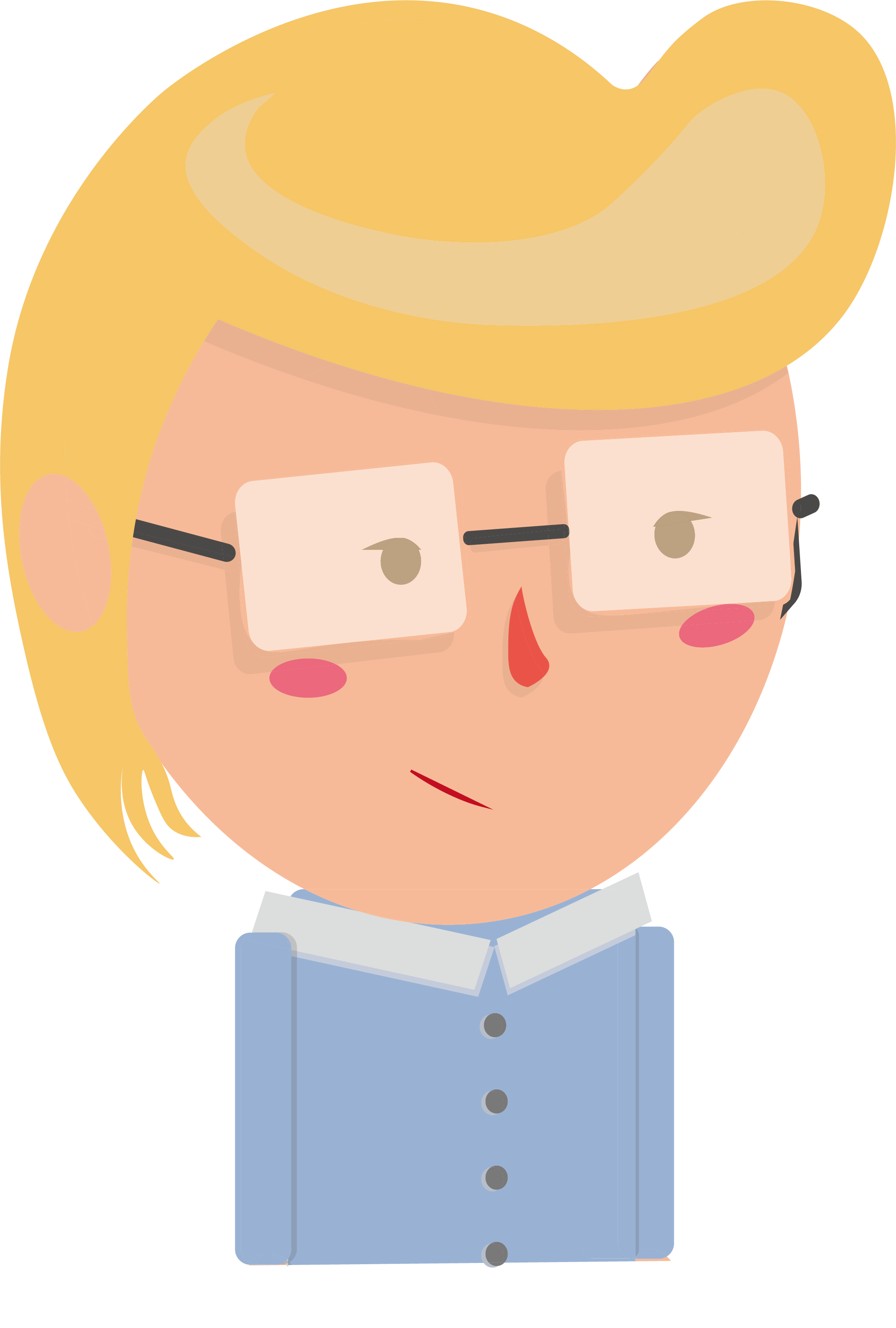
Ryan | 34yrs | Manager
Ryan is a young metrosexual who cares about fashion and has his own taste. He often goes to hair
salon once a while to keep a good look in front his coworkers and clients. He also wishes that it
is easy for him to maintain the same style every day. Thus, he always spends a lot of time doing
research on different hair style and professional salons.
These problems are resulted from personal difference in hair conditions and living habits. Thus, we wish to create a product that can simulate how a hair style will change over time, taking into account personal habits and environmental factors. We conducted a good amount of research about current offerings in the market and realized that there are a great amount of new technologies that can be combined to create a new generation hair salon experience. We will be utilizing technologies such as the detecting brush and AR to build a one-stop salon system. The system includes 3 main steps.

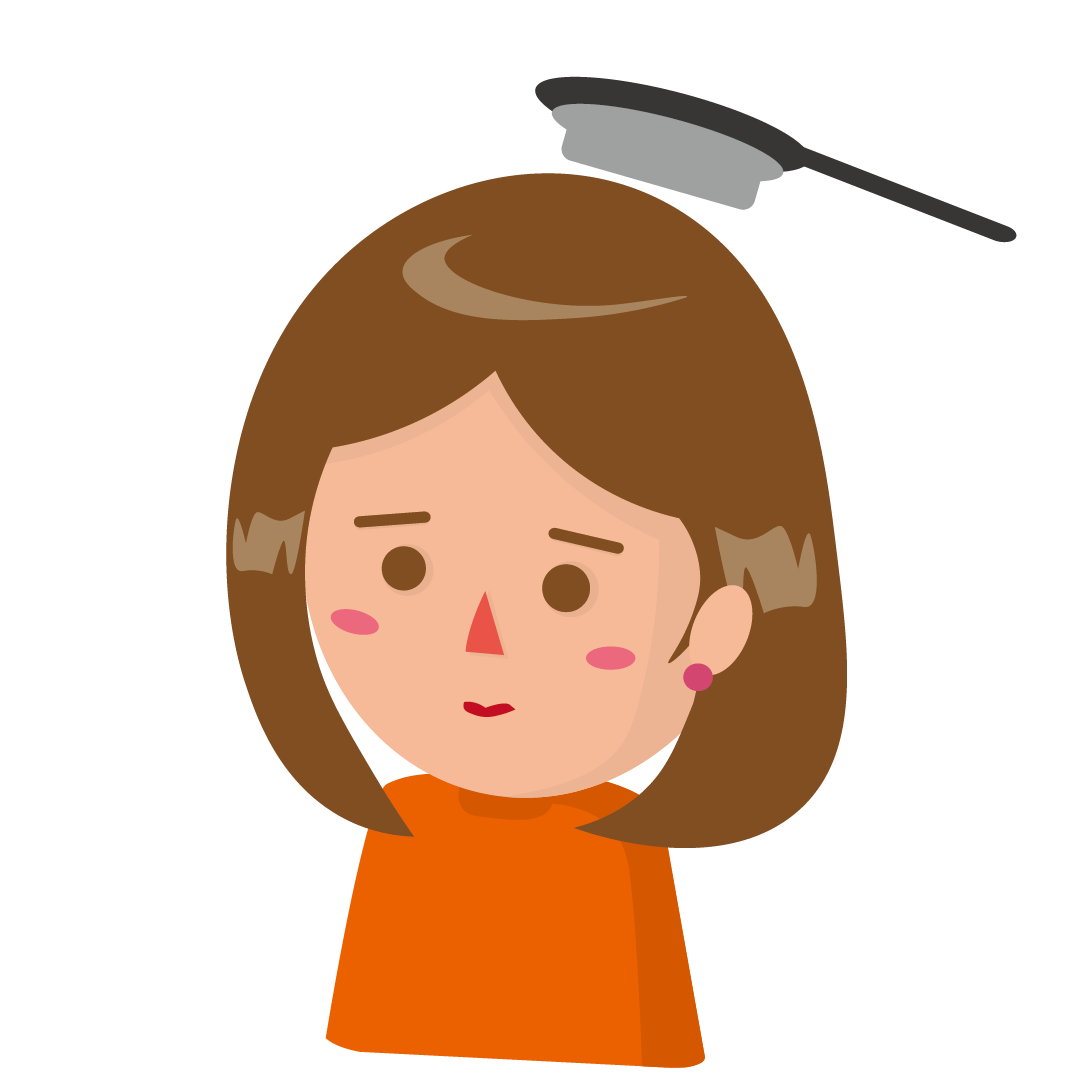
The first step of this process is to collect client information to make accurate simulations. We will be collecting information from four major categories: hair routine, daily routine, environmental factors, hair characteristics. We will collect data by two means: in-app questionnaires and detecting hair brush, which send personalized information to an algorithm to compare with big data and the data will be reflected on the smart mirror.
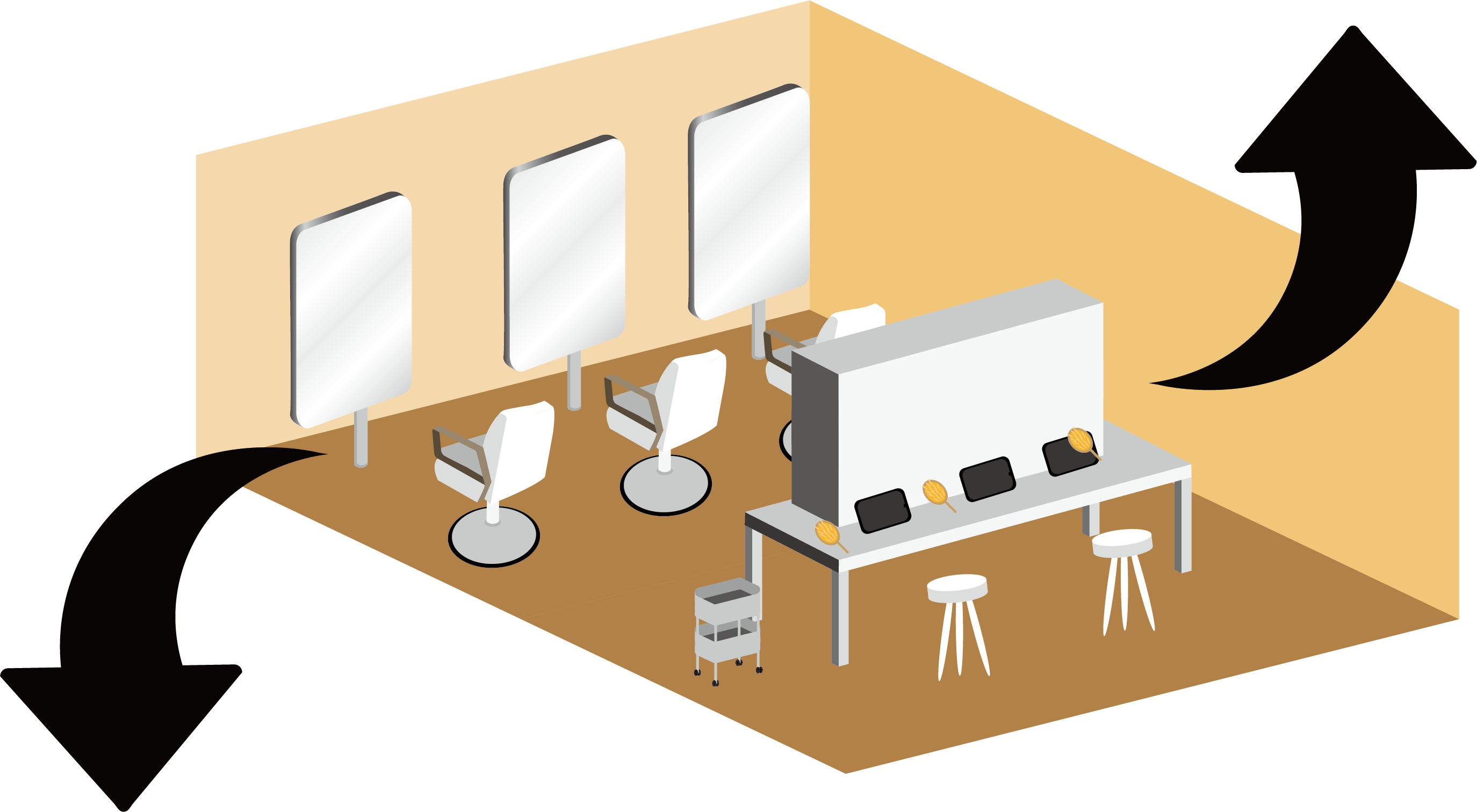
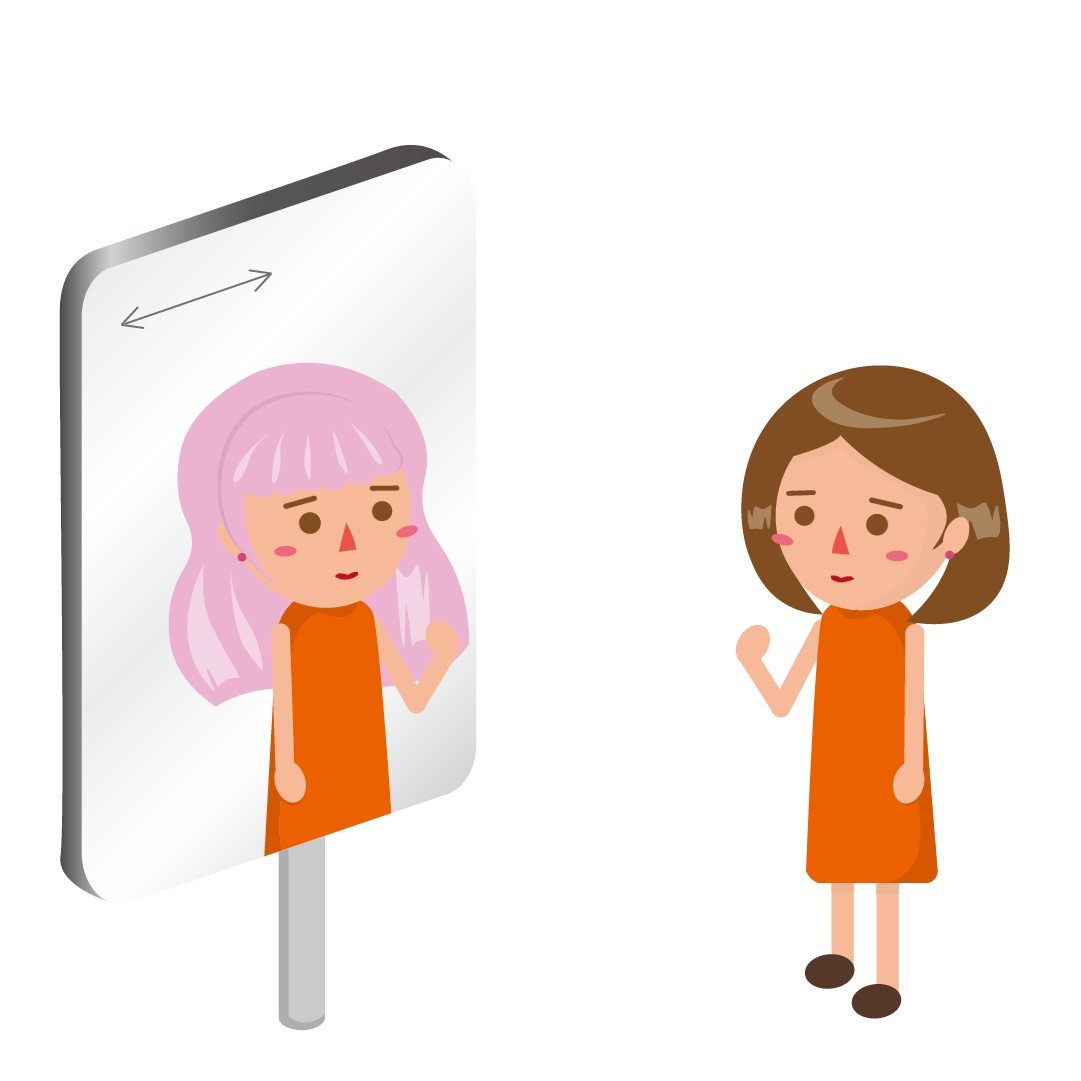
Our core innovation revolves around leveraging the smart mirror to allow clients to interact with selectors to visualize different hairstyles and hair colors based on his/her personal hair condition. Algorithms will combine all these input to understand the client’s hair status, how the hair will change with time with or without products, and simulate what the hair will look like in the future. The smart mirror will uniquely simulate and adjust to different customized external and environmental settings that will impact the quality of their hairstyle or color over time such as time, location, light, and recommended color matches. Clients can interact with various selectors on the smart mirror to visually experience the progression of their hair treatment over the course of time which will help them make the most informed decision about what style and color they should receive.
In-home assistant app will collecting data by asking users some questions (through message box), such as ‘have you washed your hair today' or ‘have you applied hair conditioner today’ on a daily basis. Users can manage the amount and the frequency of the message box questions. Based on the data and users’ activity history, the in-home assistant will recommend the most suitable hair-care methods and products to the users. You can also store your favorite hair looks and schedule salon time on the app. Overall, the best feature of the in-home assistant is that it serves as your hair condition monitor. Thus, not only helping users find the best hair look on them, EYCS System also teaches users how to take care of their hair.
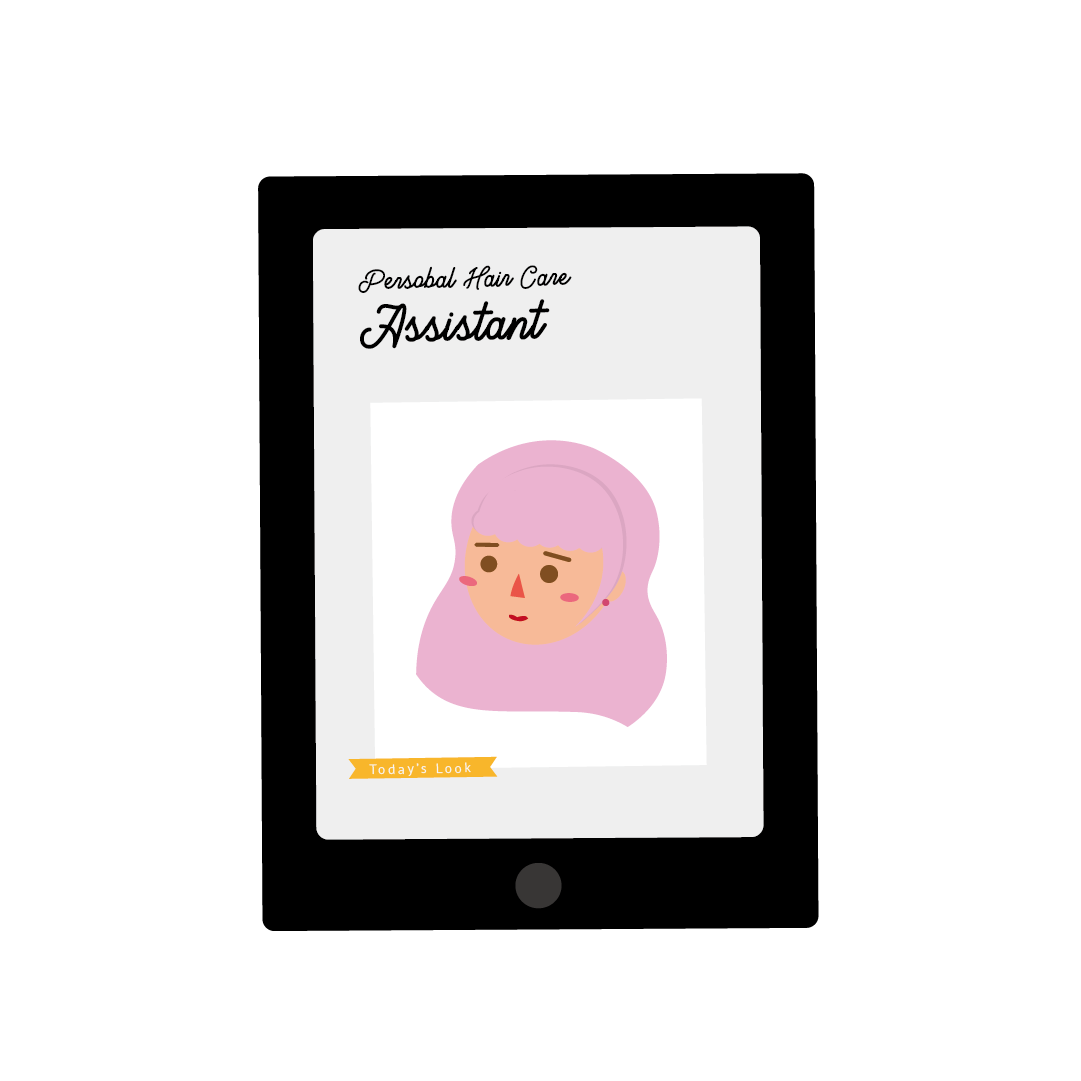
(Please Login Figma to Interact with EYCS Prototype)
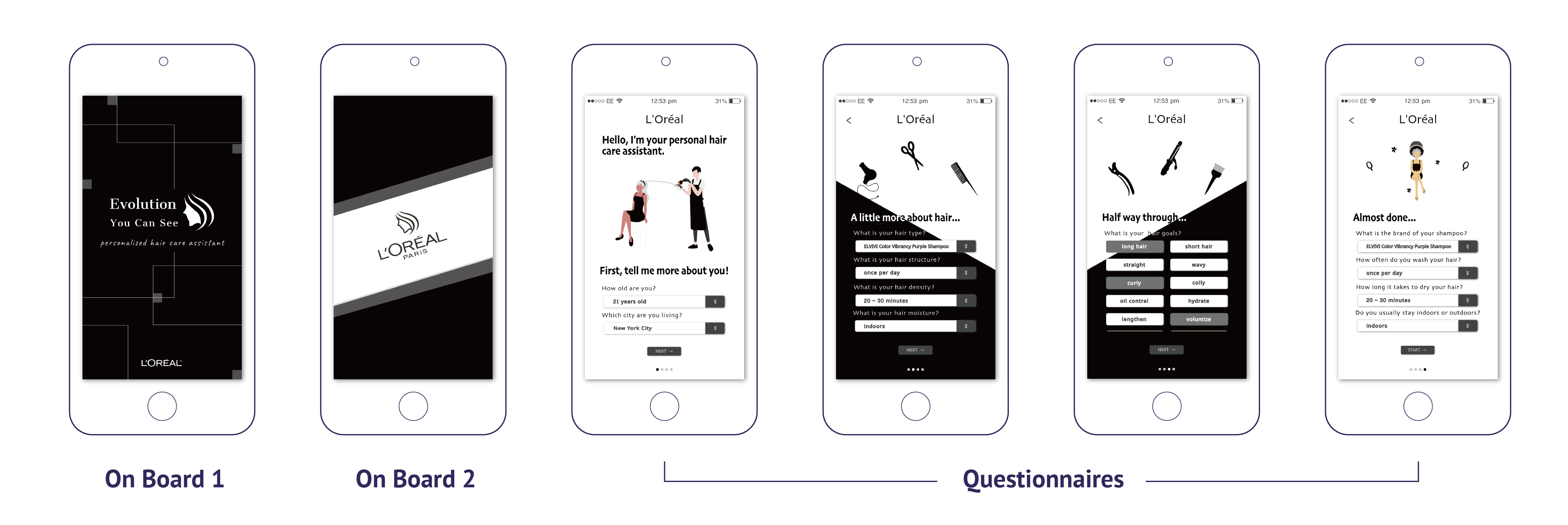
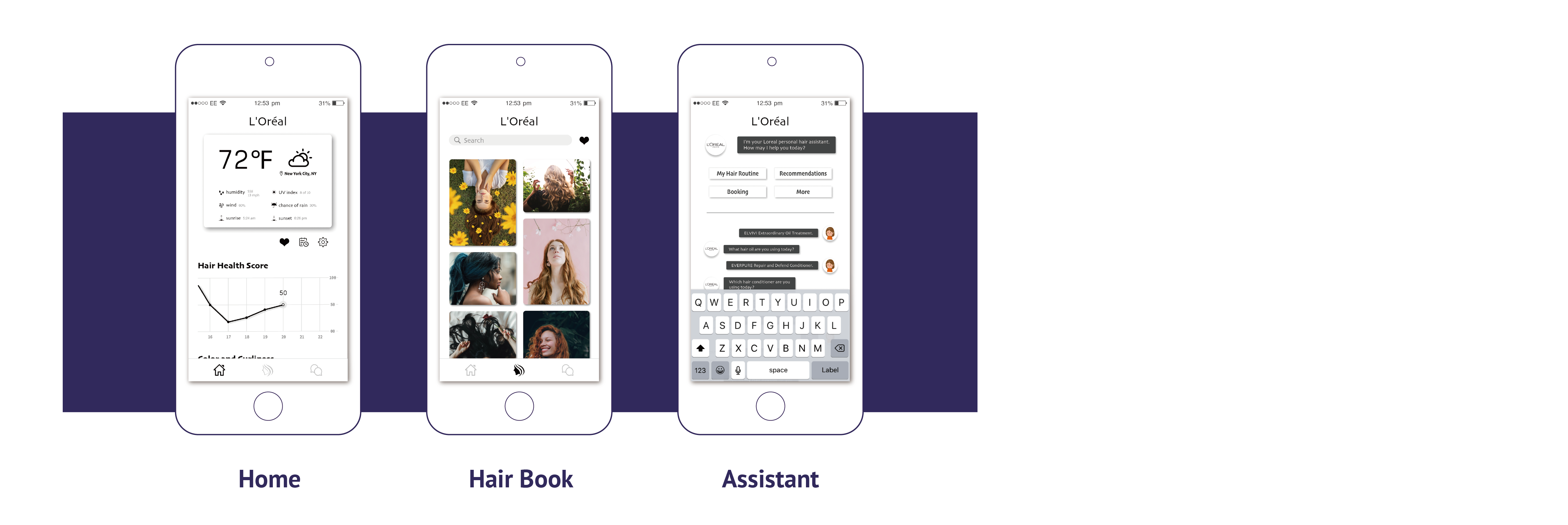
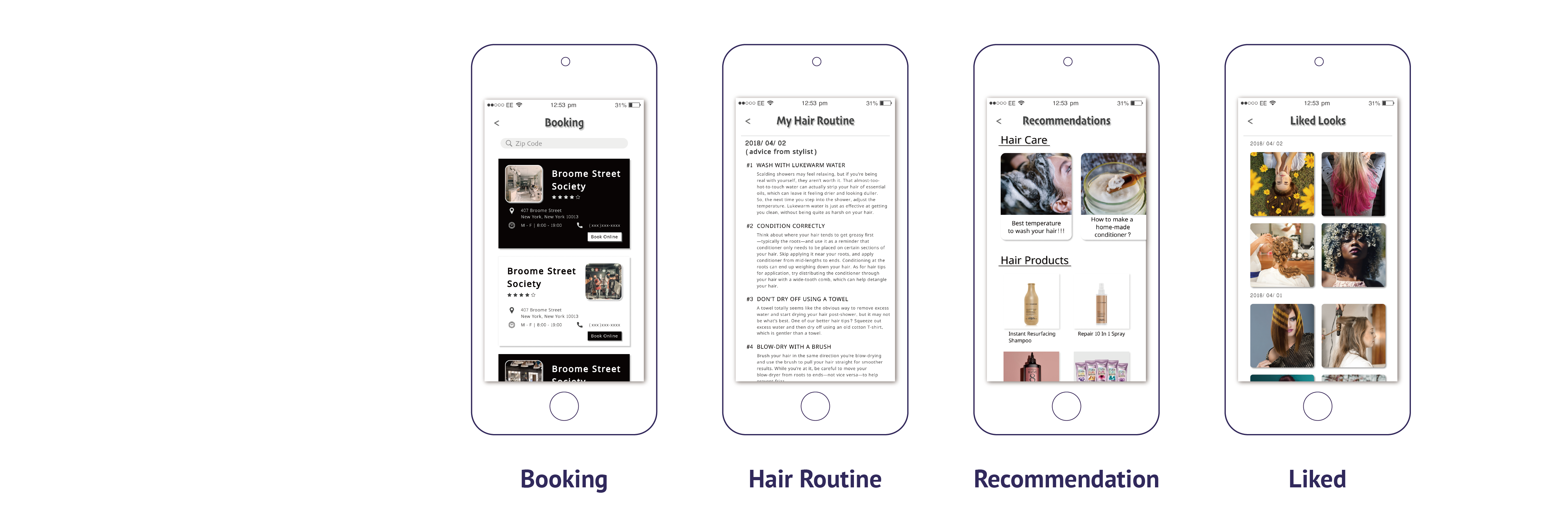
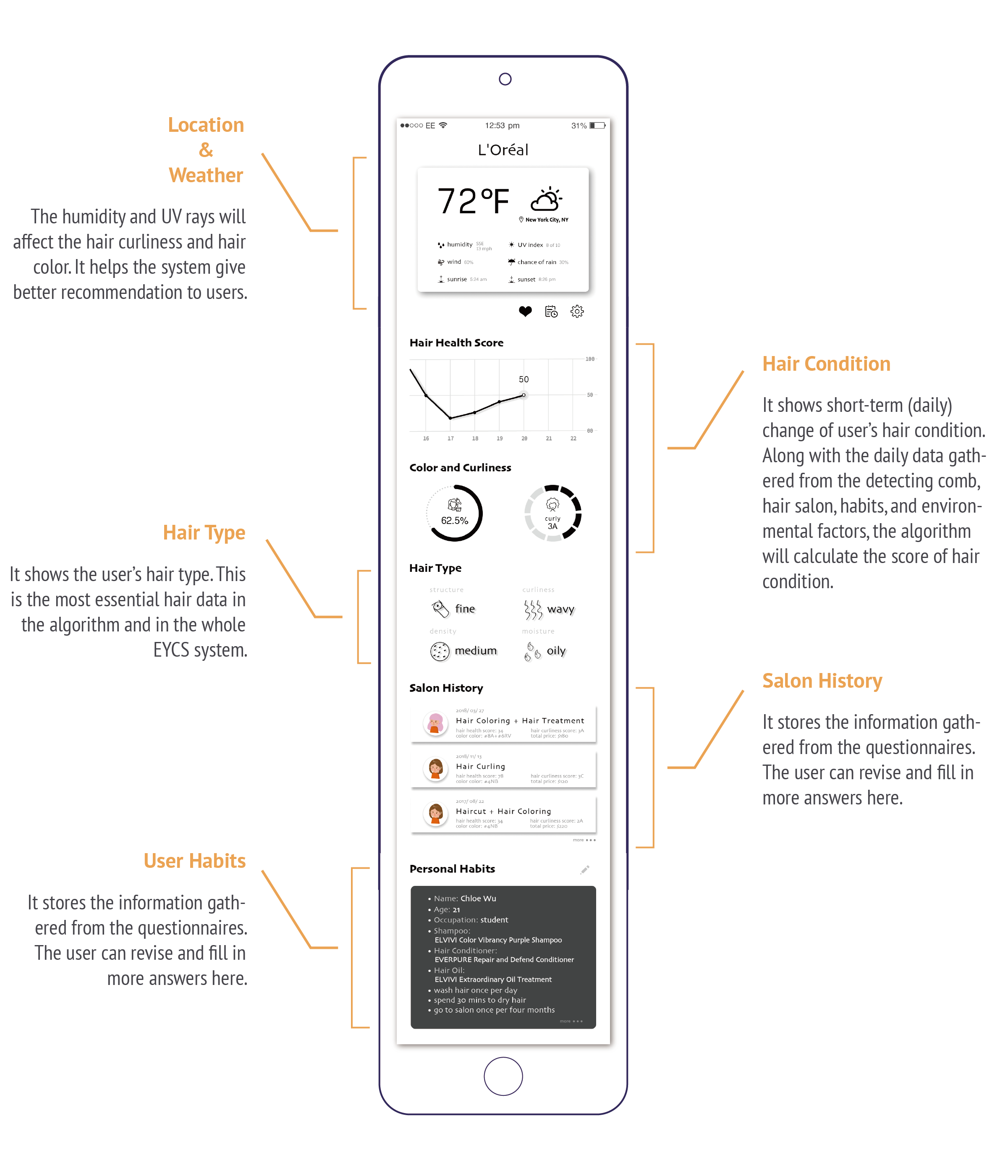
Animation of Hair Condition Change
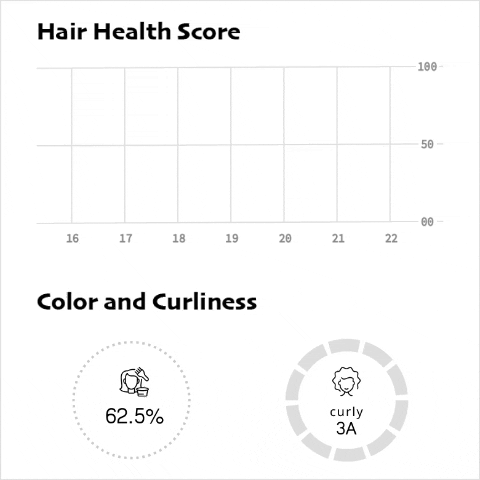
This was my very first product design project. It also opened the door to uiux design for me. Because of this project, I learn how to see a problem from a user’s perspective. Before this project, when I did the design work, sometime, I tended to make the designs look fancier yet more complicated. However, doing this project has taught me that “user-friendly” and “intuition-oriented ” are super important in uiux design. A new understanding of “user-friendly design” is the biggest takeaway for me in this project.